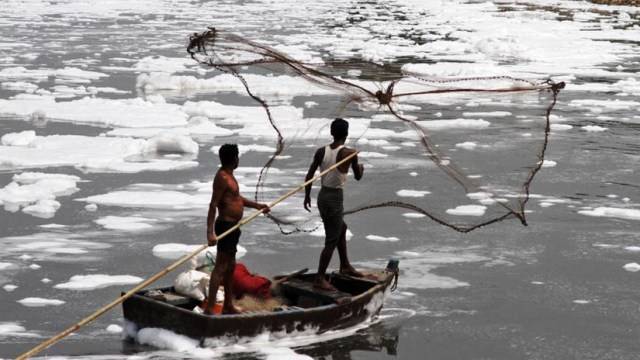
In Delhi, fish farming on a large scale has always been a question, but now the three-part pisciculture project prepared by the department of fisheries, Delhi government is ready to solve this with the implementation of the cage culture, white legged shrimp (prawns) culture and recirculating aquaculture system (RAS), introduced in the same project. The idea of this project is going to affect the fish farming and the production level with the positive results.
At present, the capital of India is selling approx 850 metric tonnes of fish, which is ordered from many other states of the country, but once the project will be ready, it is expected to gain as much as 650 metric tonnes of production at first in the capital.
When it comes to fish farming, clean water resource is a major concern and due to excessive pollution in the Yamuna river, the fishing production value is almost zero in Delhi. According to a study, one fresh water micro-organism can't survive and dies in every three kilometers in the Yamuna.

Experts from the development department have praised and warmly welcomed the move and quoted, "it will be for the first time Delhi will be producing fish on such a large scale. The three projects at an estimated cost of around 9 crores, will be a boost to the city's fishermen and bring opportunities to the youth entrepreneurs"
However the revival of the wet plants is needed in Delhi and for that government should be aware of that. While focusing on the subject Mr. C.R. Babu, head of the biodiversity parks project at DU's Centre for Environmental Management of Degradable Ecosystems, stated "there were 371 wet plants in Delhi on the Yamuna floodplains and now there are none left as a result of which flood waters can't be contained. Also, it is to be seen where the government finds the space to start such fish producing activity."
The government is planning to set up 96 cages for the cage culture, 30 units for white legged prawn culture and 6 units for recirculating aquaculture system (RAS) while starting the model project. Farmers and the individuals, who are interested in utilizing any of the three project's techniques, will get the subsidy too.
Another official said, "cages will be set up in the Yamuna where the water is about 15-20 feet deep and it's free-flowing water at Delhi's border. The fish will grow and reproduce within those cages itself." As it is known that the water of Yamuna has considerably higher levels of saltiness, white legged prawns will be produced in and around Nazafgarh.
"Since there is an acute shortage of space in Delhi, it's also decided to start the RAS method. This technique doesn't need a river as the fish production is done in tanks where water exchange is limited. Bio-filtration is used to reduce ammonia toxicity," another official stated.
It's a very important and major task for the government to make it a success despite knowing that the majority of the farmers of fisheries in Delhi are not in the production. The project is going to be a very important part of 'Blue Revolution' scheme.















